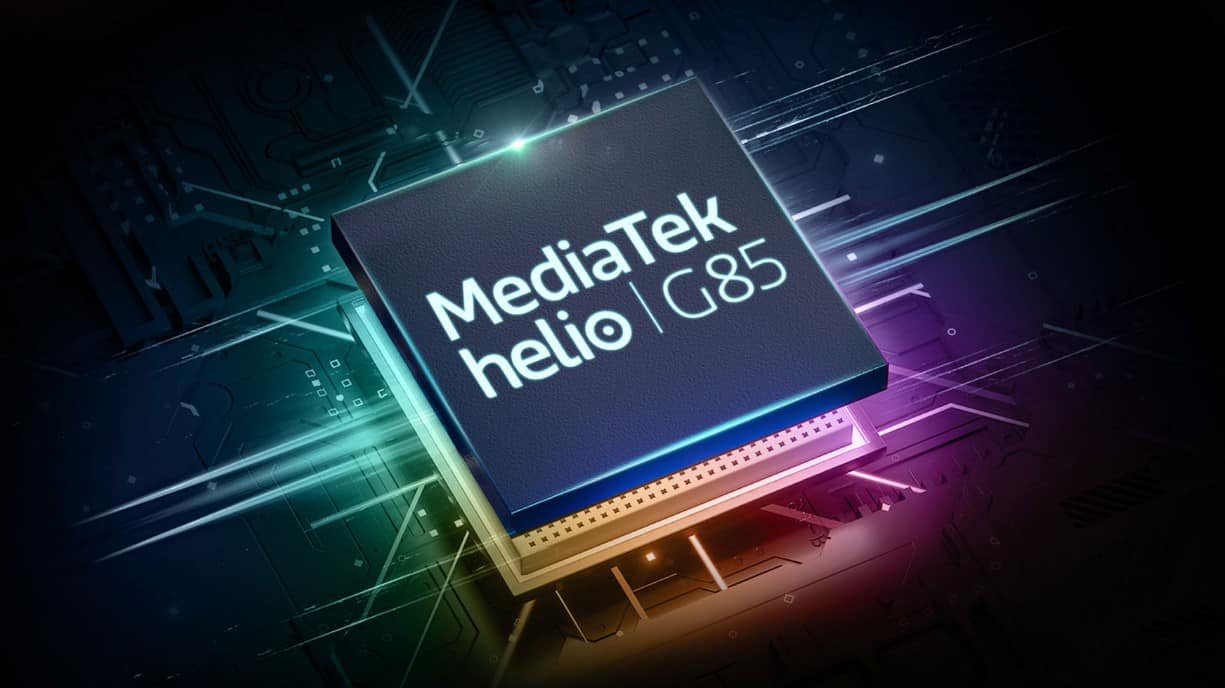MediaTek Helio G81 vs Helio G85: A Comparison
Helio G85 and Helio G81 are two chipsets from MediaTek made for budget or entry-level smartphones. The Helio G85 was launched in 2020, while the newer Helio G81 came out four years later, in August 2024.
Even though their release dates are quite far apart, both chipsets are still often used in phones with similar prices. Let’s look at what makes them different.
CPU and GPU Performance

Both chipsets have an octa-core CPU with 2 ARM Cortex-A75 cores (up to 2.0 GHz) and 6 ARM Cortex-A55 cores that help save power.
The main difference is the speed of the A55 cores. The Helio G85 runs at 1.8 GHz, while the Helio G81 runs at 1.7 GHz. This means the G85 is a little faster when doing many tasks at once.
For graphics, both use the same GPU, ARM Mali-G52 MC2. But the G85’s GPU speed is higher at 1.0 GHz, compared to 820 MHz on the G81. Because of this, the G85 performs around 5–10% better for games and graphics.
Both chipsets also support MediaTek’s HyperEngine Gaming feature, which helps balance CPU, GPU, and network use so that games run more smoothly.
Power Efficiency

Both chipsets are made using the 12-nanometre process by TSMC. This 12 nm technology helps balance performance and power saving. MediaTek says that the Helio G85 is designed to give strong performance while still keeping good battery life.
Since both use the same 12 nm process, their power use is almost the same. MediaTek also includes power-saving features like CorePilot and HyperEngine to keep gaming performance smooth without wasting too much battery.
Camera and Display Support

Both chipsets use similar camera systems (ISP) and can support two cameras at once. Each can handle one camera up to 48 MP, or two cameras up to 16 MP + 16 MP.
They also support camera features such as AI Face ID, EIS (Electronic Image Stabilisation), Rolling Shutter Compensation, and noise reduction. Both the Helio G85 and G81 also include hardware support for dual-camera bokeh effects.
For the display, both chipsets can handle Full HD+ resolution (up to 2520×1080 pixels). The difference is in the refresh rate, the Helio G81 supports up to 120 Hz, while the G85 is usually limited to 60 Hz.
This means phones with the Helio G81 can have smoother motion when scrolling or playing games. However, in terms of image quality like resolution and HDR, both are equally good.
Connectivity
Both chipsets only support 4G LTE networks. The Helio G85 supports LTE Cat-7, which allows download speeds up to 300 Mbps, while the G81 supports Cat-4, with download speeds up to 150 Mbps. Both also support Dual SIM 4G with VoLTE/ViLTE.
For wireless connections, both use Wi-Fi 5 (802.11ac) and Bluetooth 5.0. Their navigation systems include GPS, Glonass, Beidou, and Galileo. Both also have an Inertial Navigation Engine, which helps improve location accuracy indoors or in tunnels.
Conclusion
From the comparison above, both the Helio G81 and Helio G85 are entry-level chipsets with many similarities. The main differences are in graphics performance and extra features.
Based on the AnTuTu v10 benchmark, the Helio G85 scores about 262,684 points, slightly higher than the Helio G81’s 260,675 points. This difference matches the G85’s faster GPU and higher A55 core speed.
In short, the Helio G85 offers a bit better graphics performance, while the Helio G81 supports a higher screen refresh rate for smoother gaming and scrolling.
